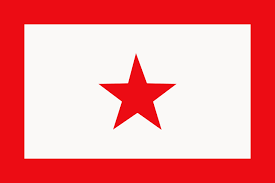
United National Liberation Front (UNLF)

02.12.2023
United National Liberation Front (UNLF) , Daily Current Affairs , RACE IAS : Best IAS Coaching in Lucknow
|
For Prelims: About UNLF ,Important points,4 Point Proposal,About ISRO For mains paper:Objective,Divisions of UNLF,Importance of Agreement,Challenges before the agreement,Other rebellions in Manipur, |
Why in the news?
Recently the Central Government and the Government of Manipur have signed a peace agreement with the United National Liberation Front (UNLF), the oldest armed organization of Manipur.
Important points:
- Apart from this rival faction of the UNLF, the Center and Manipur still have to deal with the six remaining valley-based insurgent groups – the People's Liberation Army (PLA), the People's Revolutionary Party of Kangleipak (PREPAK), the Kanglei Pak Communist Party (KCP), the Kanglei Yaol Kanba Lup (KYKL). ), the Coordination Committee (CORCOM) and the Alliance for Socialist Unity Kangleipak (ASUK) for the peace process.
- Earlier in 2008, all 25 Kuki militant groups in the state had signed a suspension of operations agreement with the central and state governments.
About UNLF:
- It is the oldest militant group in Manipur dominated by the Meitei community and one of the seven “Meitei extremist organizations” banned by the central government under the Unlawful Activities Prevention Act.
- The UNLF is the second oldest rebel group in the North-East with separatist ideology after the Naga National Council under Angami Zapu Phizo since 1947.
- Arambam Samarendra, a young postgraduate in English literature from Pune, formed the UNLF on November 24, 1964, with the vision of establishing an "independent socialist Manipur".
- This is separate from insurgent groups operating in the Naga-dominated and Kuki-Zomi dominated hills of the state.
- In 2005, it proposed a 4-point resolution to end the India-Manipur conflict.
- The central government had refused to accept the 4-point proposal of UNLF.
4 Point Proposal:
- Referendum: It should be conducted under the supervision of the United Nations (UN) to ascertain the opinion of the people of the state on the main issue of restoration of independence of Manipur.
- Political authority: Handing over of political power by the United Nations according to the results of a referendum.
- Arms Surrender: Weapons will be handed over to the UN forces by the UNLF equivalent to the withdrawal of Indian troops.
- UN peacekeeping forces: They should be deployed to Manipur to ensure that the process is free and fair.
Objective :
- To liberate Manipur from India and create an independent socialist state of Manipur.
- Its objective was to recapture the Kabo Valley in Myanmar.
Divisions of UNLF:
Due to internal differences the UNLF split into two factions.
- Khundongbam Pambei: Recently signed a peace agreement with the government.
- The surrendered group consists of about 70 cadres of the Khundongbam Pambei alias Tomba alias Sunil faction, which had infiltrated into Manipur during the ongoing conflict on May 7.
- NC Koireng:
Importance of Agreement:
- Historic Achievement: This agreement marks the end of the six decade long armed movement. Because this is the first time that the banned valley-based organization has joined the peace talks after the eruption of ethnic violence in 2023.
- Peacekeeping: The peace agreement will bring peace to the state and encourage other armed groups based in the valley to participate in the peace process.
- Rehabilitation: The agreement provides for rehabilitation and resettlement of armed cadres of the UNLF.
Challenges before the agreement:
- The terms of the agreement are not known and matters could be further complicated by the militants' involvement in the latest ethnic conflict.
- If the criminal cases are withdrawn, similar concessions will have to be made to the Kuki militants on the other hand, who are reportedly continuing with the suspension of operations agreement.
- Implementing a peace agreement can be complex due to the multiplicity of stakeholders and their differing interests and grievances.
- Each group has different historical grievances, aspirations and demands, making it difficult to reach a solution that satisfies all parties.
- The weakness of peace agreements also lies in their vulnerability to disruptions caused by extremist factions or splinter groups within these communities.
- Reluctance of neighboring countries to support peace processes or interference from outside actors could destabilize the region.
Other rebellions in Manipur:
- Naga Movement: It is the longest running insurgency in the country that fights for Greater Nagaland or Nagalim.
- Kuki Movement: They have also fought the Government of India for an 'independent Kuki homeland' spread throughout Manipur
- The Kuki insurgency gained momentum following ethnic conflict with the Nagas of Manipur in the early 1990s.
- Meitei protests: The Meitei people in Manipur protested against the merger agreement between the Manipuri king and the Indian government in 1949.